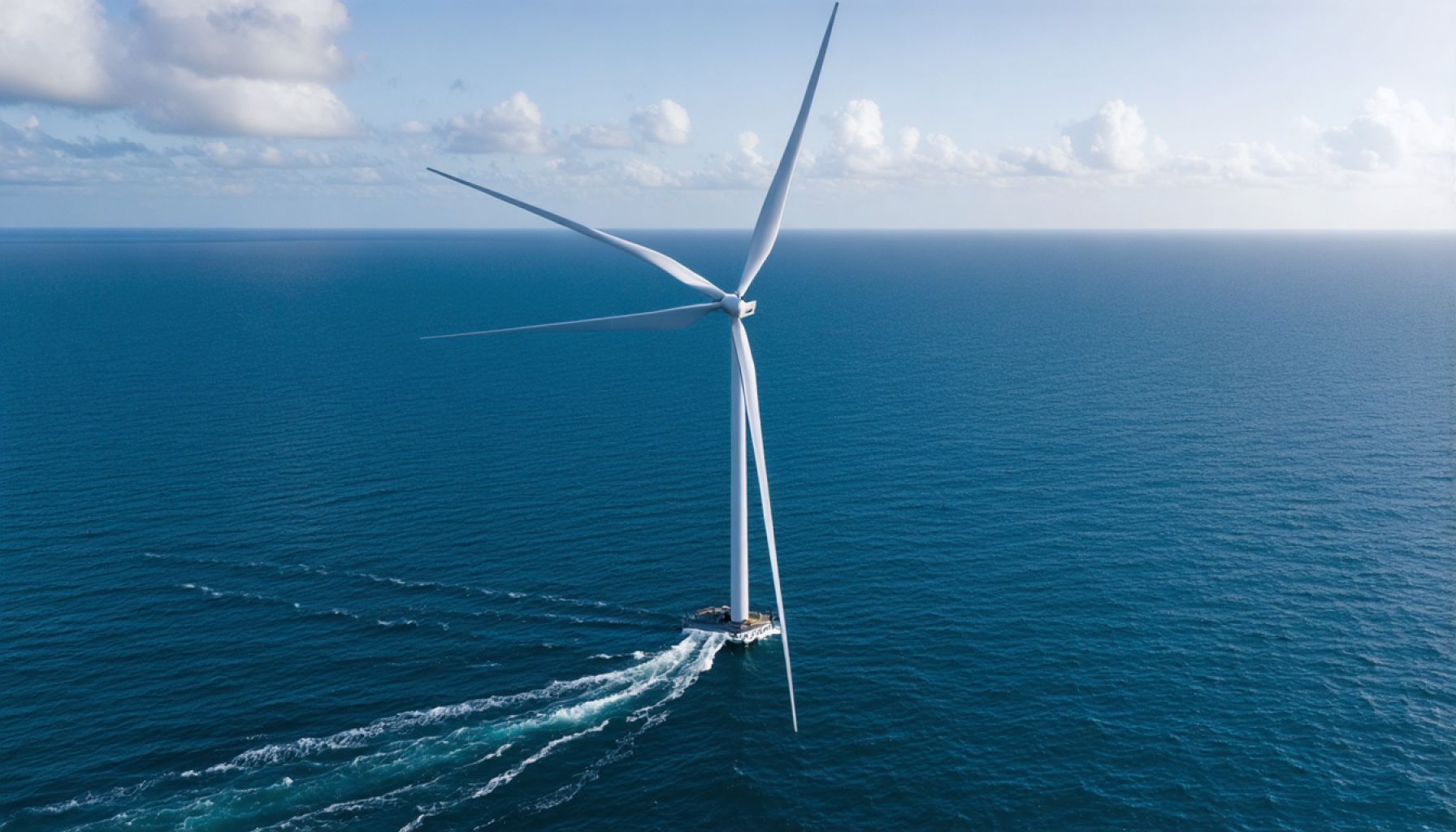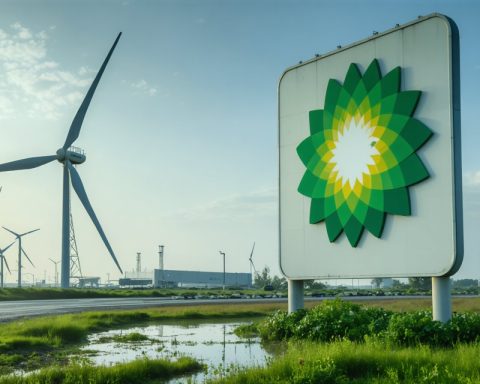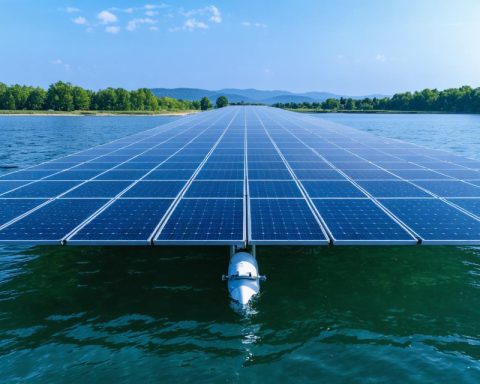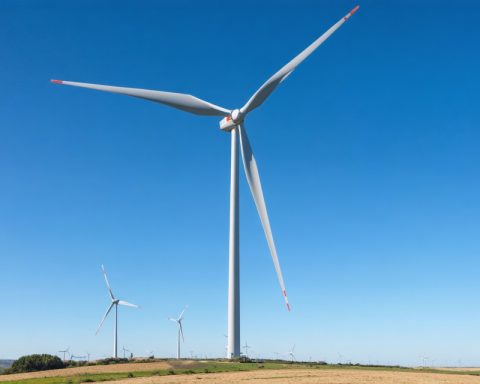- Vestas, a leader in wind energy, faces challenges with its declining onshore wind turbine orders, totaling only 884 megawatts in early 2025.
- The company is strategically pivoting to focus on large-scale offshore projects, revitalizing its order book and demonstrating adaptability.
- Offshore wind projects offer Vestas higher capacities and efficiency, crucial for maintaining competitive advantage in global markets.
- Regulatory challenges and land disputes hamper onshore wind initiatives, prompting a shift towards more promising offshore opportunities.
- The shift signals a broader industry trend, highlighting the importance of adaptability and foresight amidst a dynamic energy landscape.
- The wind energy market is in flux; Vestas’ response underscores the need for resilience and visionary leadership to navigate future challenges.
- Vestas’ commitment to innovation and sustainability positions it as a frontrunner in the evolving renewable energy sector.
A tempest brews on the horizon for Vestas, the industry titan renowned for harnessing wind energy’s boundless potential. With its soaring ambitions toward a sustainable future, the Danish powerhouse faces a stumbling block—its onshore wind turbine orders slacken to a mere 884 megawatts in the first quarter of 2025. Yet, amidst the tempest, the behemoth stands undeterred, pivoting masterfully to weather the storm.
A daring pivot to colossal offshore projects injects vitality into Vestas’ overall order book. As coastal gales swell and beckon colossal turbines, the company seizes the opportunity to demonstrate its strategic agility. The year’s opening acts reveal a grand narrative of adaptability and foresight set against a backdrop of an evolving energy landscape. To the untrained eye, it might seem Vestas is merely keeping pace, but beneath the surface, a major recalibration is at play.
Here’s the truth: the wind energy market is in flux. Onshore endeavors face myriad challenges, from regulatory hurdles to land acquisition disputes. With limited resources and increasing scrutiny, innovators like Vestas turn their sails seaward, exploring burgeoning offshore capabilities that promise more robust outcomes. Offshore developments offer the dual promise of higher capacities and greater efficiency and, crucially, allow the company to hone its edge in competitive global markets.
Vivid images come to mind—massive structures rising from azure seas, standing sentinel against the waves. This pivot underscores Vestas’ unwavering commitment to innovation and sustainability.
Beyond just numbers, the first quarter serves as a harbinger of change in global energy trends. Despite tepid onshore performance, Vestas’ strategic realignment signals a broader movement within the industry. Energy experts suggest this shift highlights both challenges and opportunities, emphasizing the need for flexibility and foresight in navigating varied terrains.
For those invested in the winds of change, the key takeaway is clear: adaptability is the cornerstone of enduring success. As climate turmoil and energy demands intensify, only the resilient and forward-thinking will thrive. Vestas, with its ears to the wind, exemplifies the resolve and creative zeal necessary to lead in a rapidly transforming sector.
Anchored by a blend of innovation and tradition, Vestas charts a course through uncharted waters. The message is resounding—overcoming ebbs and flows requires more than just persistence; it demands visionary leadership capable of navigating the gales of the future. As they harness the roaring whispers of the wind, Vestas not only sets a precedent but also a challenge to others in the renewable realm: change is inevitable, and those who embrace it will lead us into a new era.
Navigating the Storm: How Vestas Stays Ahead in the Wind Energy Revolution
The Current State of Vestas and the Wind Energy Market
Vestas, a leader in the wind energy sector, found its Q1 2025 onshore wind turbine orders dwindling to 884 megawatts. However, this decline in onshore activity isn’t influencing Vestas’ overall strategic vision; instead, it’s catalyzing a critical shift toward offshore wind projects. Let’s explore the factors behind this shift and what it means for the wind energy industry.
Key Challenges in Onshore Wind Energy
1. Regulatory Hurdles: Onshore wind projects are often entangled in complex regulatory frameworks that vary significantly across regions, delaying projects and increasing costs.
2. Land Acquisition Issues: Securing suitable land can be contentious, with potential conflicts involving local communities and environmental concerns.
3. Market Saturation: In some regions, much of the optimal land for wind energy has already been developed, limiting new onshore opportunities.
The Offshore Advantage
Offshore wind presents a compelling case for its resurgence:
– Higher Capacity: Offshore wind farms can host larger turbines and produce more energy due to stronger and more consistent winds.
– Less Land Conflict: With these projects located at sea, offshore development often faces fewer land-use conflicts.
– Competitive Edge: In an increasingly competitive global market, investing in offshore capabilities positions companies like Vestas as leaders in high-efficiency, high-output energy production.
Real-World Use Cases
Countries like the UK and Germany, leaders in offshore wind, have demonstrated its viability and scalability. Offshore projects like the Hornsea Project in the UK show the massive potential of offshore wind to contribute significantly to energy grids.
Market Trends & Industry Forecasts
Growth Predictions
The global offshore wind market is expected to grow at a CAGR of over 15% from 2023 to 2030, driven by advancements in turbine technology and increasing global commitment to renewable energy. The International Energy Agency (IEA) anticipates a colossal increase in offshore wind capacity, particularly in Europe and Asia.
Technological Innovations
– Floating Turbines: New technology in floating turbines enables energy production further from shore, opening up new areas for development.
– Digital Integration: AI and IoT technologies are increasingly used to enhance the efficiency and maintenance of wind farms, providing real-time data.
Vestas’ Strategic Moves
Investment in R&D
Vestas continues to invest heavily in research and development to improve turbine technology and explore sustainable materials, which could lead to longer-lasting and more efficient energy solutions.
Partnerships and Alliances
Forming strategic partnerships plays a crucial role in accelerating offshore wind projects. Collaborations with governments and energy companies are vital to overcoming infrastructure and logistical barriers.
Pros and Cons Overview
Pros:
– Significant potential for high energy yield.
– Reduced risk of land-based obstacles.
– Positioning as a leader in renewable energy innovation.
Cons:
– Higher initial investment and logistical costs.
– Requires robust infrastructure for energy transmission to shore.
– Environmental impact on marine ecosystems needs careful consideration.
Recommendations for Stakeholders
1. Stay Informed: Follow market trends and regulatory updates to anticipate shifts in the industry.
2. Invest in Innovation: Emphasize R&D for breakthrough technologies, like floating turbines, to stay ahead of the curve.
3. Engage with Communities: Forge alliances with local communities and stakeholders to address potential conflicts proactively.
Conclusion
Vestas exemplifies the need for adaptability in the face of changing energy dynamics. As they lean into offshore wind projects, they set a benchmark in the industry for others to follow. Those invested in renewable energies should consider similar pivots and investments in technology for sustained success. Embracing change not only allows companies to thrive but also plays a pivotal role in driving the global shift toward sustainable energy solutions.
For more insights and updates in renewable energy, explore Vestas.













